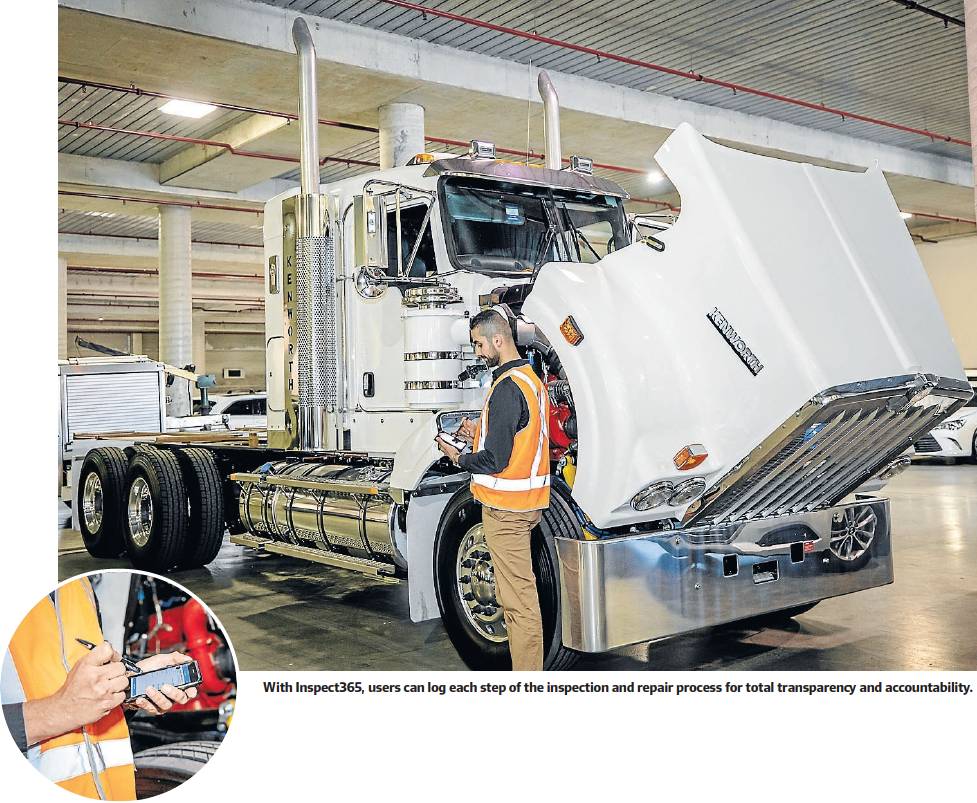Be prepared for fleet safety changes
Road safety in Australia is a group effort. From cyclists to road train drivers, everyone who shares our roads has a part to play to make sure that our roads are safe.
However, it may be too great a challenge. A new report by the Australian Automobile Association has found that in 2018, every state is set to miss the national road safety targets established in 2011.
The National Heavy Vehicle Regulator recognised the need for an amendment of Australia’s Heavy Vehicle National Laws (HVNL). As a result, changes that will significantly affect the industry are expected to take effect on October 1, 2018.
Among the most significant changes is that for the first time, the ‘‘Chain of Responsibility’’ will now extend to vehicle standards and maintenance. This means that anyone in the heavy vehicle road transport supply chain will be responsible for any instance of non-compliance.
‘‘These are drastic changes, but they’re a positive step forward. Anything that improves road safety is a welcome move,’’ says Andy Mulcaster, managing director of sgfleet Australia.
‘‘It’s now up to fleet operators to be aware of what’s at stake.’’
Penalties for non-compliance are severe: entire fleets could be grounded. What’s more, businesses and individuals could both face multiple fines per incident.
‘‘If a supervisor allows a driver to use a truck that’s known to be faulty, both the supervisor and the business are up for a fine,’’ Mulcaster says.
‘‘At worst, you could go to prison.’’
The changes have caught many in the industry off-guard.
‘‘From October, your business’s risk profile could be completely different,’’ says Kane Wylie, sgfleet’s trade projects manager.
With audits now possible at any time, sgfleet has developed a way for businesses to easily comply with the new laws, as well as bring their paperbased systems into the digital world.
‘‘It’s our duty to advise our customers when things in the industry change, and as changes go these revised laws are among the biggest. From what we knew about the current methods of defect reporting, we knew there were problems that had to be addressed,’’ Mulcaster says.
‘‘So we felt it was necessary to give our customers the tools to help comply with the law as soon as they come into effect.
‘‘We knew we could come up with a way that would satisfy all stakeholders.’’
After consulting customers and working closely with industry experts, sgfleet developed Inspect365, a tool that not only allows users to manage their safety inspections, but also permits the reporting of progress on identified action items.
The changes in the law identified the need for a stronger process around vehicle inspection. Users can log each step of the inspection and repair process for total transparency and accountability.
‘‘In developing Inspect365, we blended technology with our core capability,’’ says Andy Graham, sgfleet’s group head of innovation and technology. ‘‘We performed a gap analysis on paper-based systems – they’re still out there – and Inspect365 fills the gaps we found.’’ Inspect365 is entirely digital, providing a paperless trail. ‘‘Inspect365 streamlines the entire process,’’ Wylie says. ‘‘There’s no longer a need for paper forms, cutting out one of the most laborious parts of vehicle inspection.’’ At the end of the process, repairs can be digitally signed off by the repairer. This way, users can ‘‘close the loop’’ on any actionable issue. ‘‘We’re very excited about the ‘closed loop’ defect resolution portal,’’ Mulcaster says. ‘‘It’s a complete record of actions taken to resolve any identified issues. Businesses and individuals alike can feel secure in knowing they’re safe, their fleet is safe, and other road users will be safer.’’
The changes in law and the introduction of Inspect365 typify sgfleet’s innovative approach. The tool is a product of sgfleet’s Innovation Hub, and plans are in the works for many more.
‘‘As systems became more automated, we started a shift to tech some time ago,’’ Graham says.
‘‘Inspect365’s format could be used to apply to any asset, like light commercial or passenger vehicles. This is an extension of the solution as a result of the research we conducted. The inspection requirement goes beyond the CoR changes.’’
Another potential area of application is grey fleets – vehicles used on behalf of a business regardless of whether or not it owns them.
‘‘Grey fleets are a big problem in the industry because they’re so difficult to track,’’ Mulcaster says. ‘‘Inspect365’s tech means that a company could have visibility over a grey fleet, which would come as a relief to many.’’
That’s all on the roadmap, but the industry’s biggest obstacle remains the impending changes to the HVNL. Graham believes that there are many fleet operators out there still unaware of the impact these changes will have.
‘‘When these changes take effect, there’ll be an increased demand to demonstrate safety. We believe Inspect365 clearly demonstrates that safety in a way that complies with the regulator and is easy to use,’’ he says.
‘‘Be aware that these changes are coming,’’ Mulcaster says.
‘‘But at the same time, be aware that there’s a solution, and it’s available today.’’
When these changes take effect, there’ll be an increased demand to demonstrate safety.
Andy Graham
